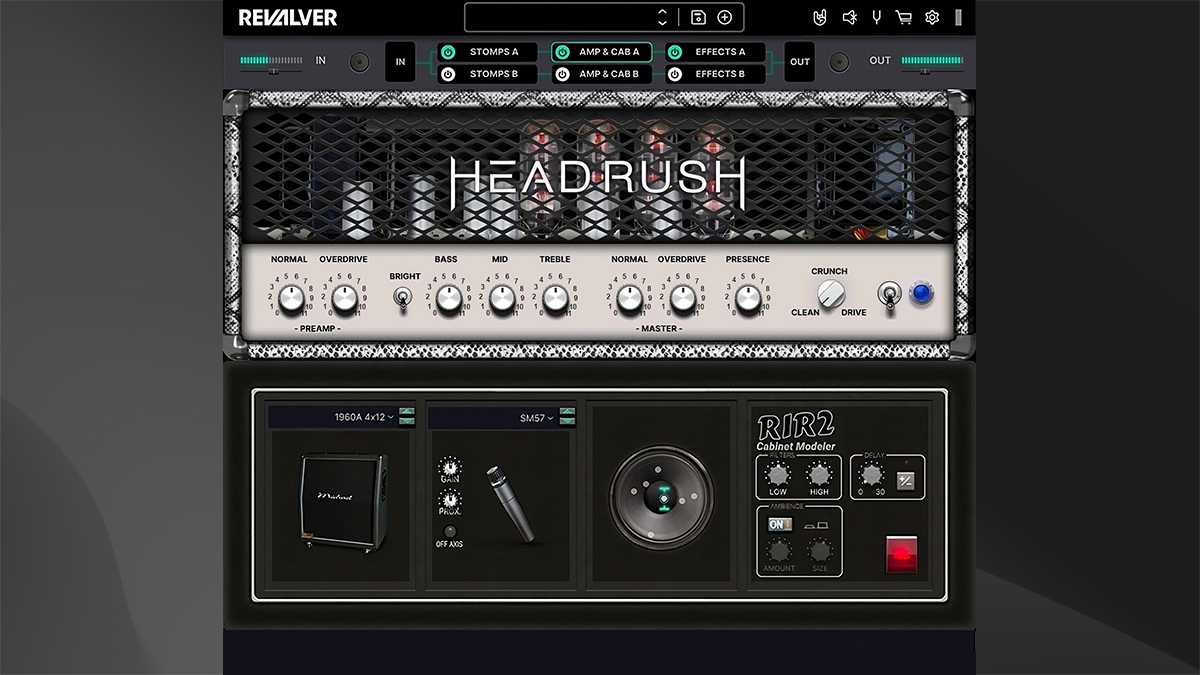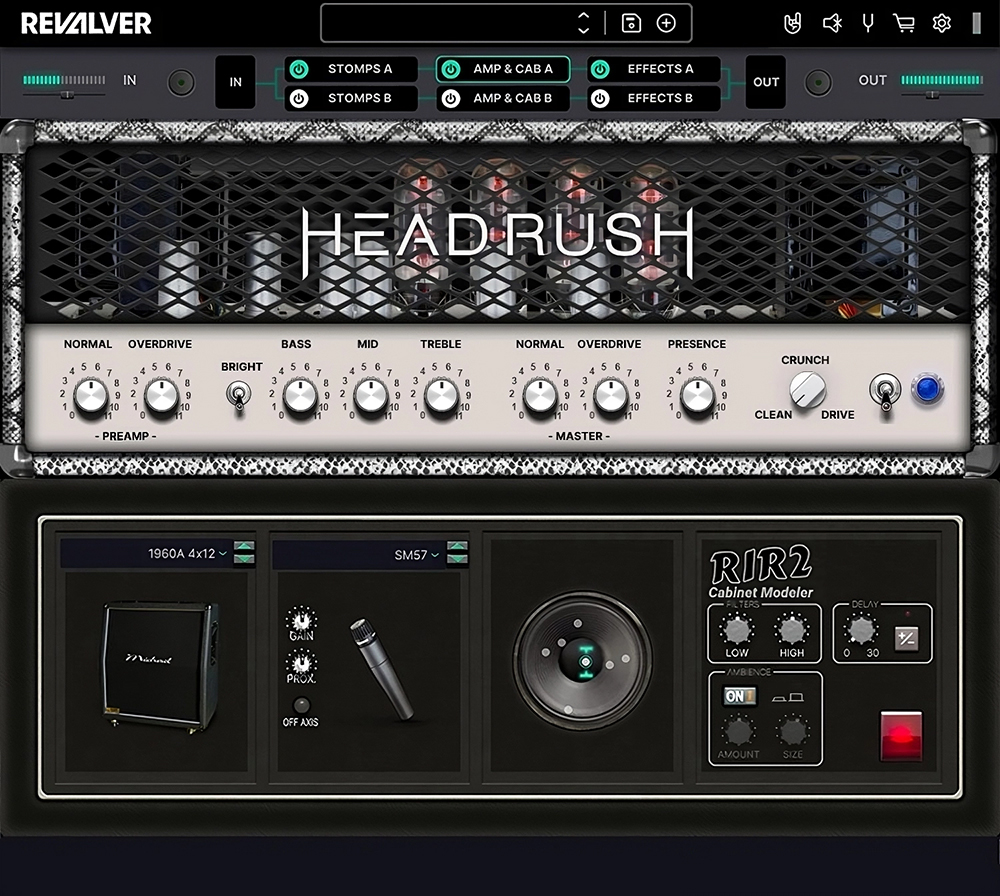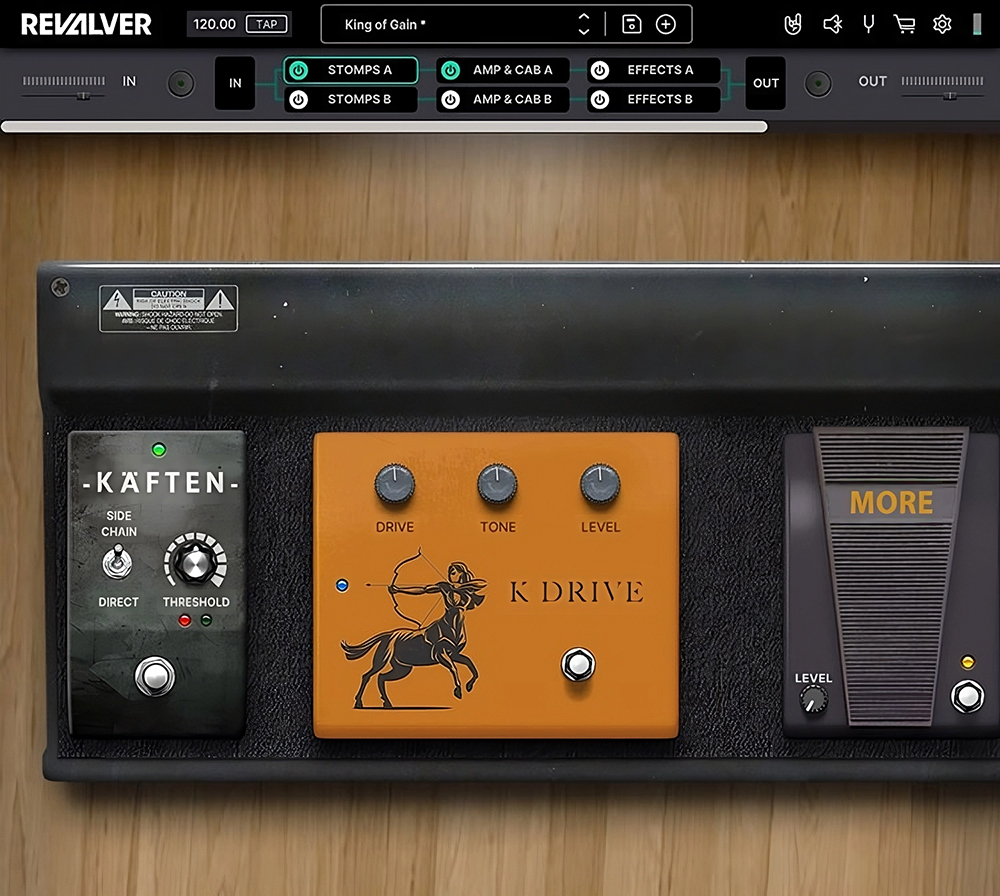
HeadRush has rebooted the cult classic ReValver amp software in the form of the ReValver 5 – an updated modeling engine that offers seamless integration with the brand’s multi-effects pedalboards.
Notably, a new form of the ReValver software returns for the first time since 2014, when it was updated to its fourth edition by Peavey – the company who first introduced the award-winning modeling platform in the early ‘00s, when digital amps were still in their relative infancy.
Five years after Peavey issued that update, it was announced the brand had sold the guitar amp software to Audio Media Research – a company that was then later acquired by inMusic, which in turn is the parent company of HeadRush.
So, after a few years in the digital wilderness, ReValver is finally back and, according to its new owner, better than ever, introducing some updated specs and functionality that sees it work alongside HeadRush’s hardware catalog of multi-effects pedals.
But as is well-documented, the ReValver returns from its exile in particularly competitive market conditions. Line 6, Neural DSP and now Fender have all been pushing the boundaries of the amp sim arms race for some time now, and as such HeadRush has its work cut out to make its new product cut through the noise and find a loyal player base.
With that in mind, it’s important not to write-off HeadRush’s own pedigree in this corner of the market, and as such, the return of ReValver – bolstered by the former’s considerable experience in this field – looks like a surefire win for the company.
That, and ReValver already has a loyal faction of players who’ve been with it from the start. Indeed, ReValver offered the only officially licensed Peavey and Budda amp plugins during its heyday – and it still does.
As mentioned, though, this is a totally new beast altogether that has pulled out all the stops in order to make a statement, and perhaps even issue a friendly warning to its competitors.
The biggest headline here is the ReValver and HeadRush compatibility. In essence, both factions have “combined their renowned amp and effects models to offer a truly stunning array of tonal options”.


In practice, that means HeadRush presets can be crafted in ReValver and used to record with in a DAW via the ReValver’s VST and AU plugins, while amp models from the ReValver plugin can be transferred to HeadRush multi-effects for use on-stage.
This is a functionality that many players crave when looking for a suitable amp modeling multi-effects unit, and is a demand that Neural DSP is only just getting up to speed with with its first ‘board-compatible Archetype plugin.
Here, though, it’s not just one plugin available – it’s loads, and that list includes the only officially licensed Peavey and Budda amps, too, which were made with “the aid of the original equipment”. Specifically, the plugin offers Peavey 6506 and 6506+ amps.
But how many amps and effects you get depends on how much you’re willing to pay for them. ReValver 5 is free to download with some basic models available, but there is a range of expansion packs that deliver the tonal goods. The $12 Standard package includes 12 amps and 12 stompboxes, while the most expensive $79 Producer collection offers 50 amps and 77 stompboxes.
Examples of digital amps include models from HeadRush, as well as ones inspired by the likes of Marshall, Vox, Engl, Fender and more.

Other notable highlights of the ReValver 5 include the RIR2 cab module for experimenting with mic type, placement and environment, compatibility with third party IRs and an intuitive control layout.
The updated software also utilizes Audio Cloning Technology, which “takes ReValver’s cabinet modeling and EQ matching to the next level” by letting players clone the sound and characteristics of other instruments, including acoustics and – notably – other guitar and pickup combinations.
A Gig Mode with full MIDI mapping also helps facilitate studio-to-stage application for the software.
All in all, it looks to be a fairly robust return for ReValver, and HeadRush looks to have made every effort to make its new software as competitive and appealing as possible in a heavily crowded market. Only time will tell if it's done enough.
Head over to HeadRush to find out more.







